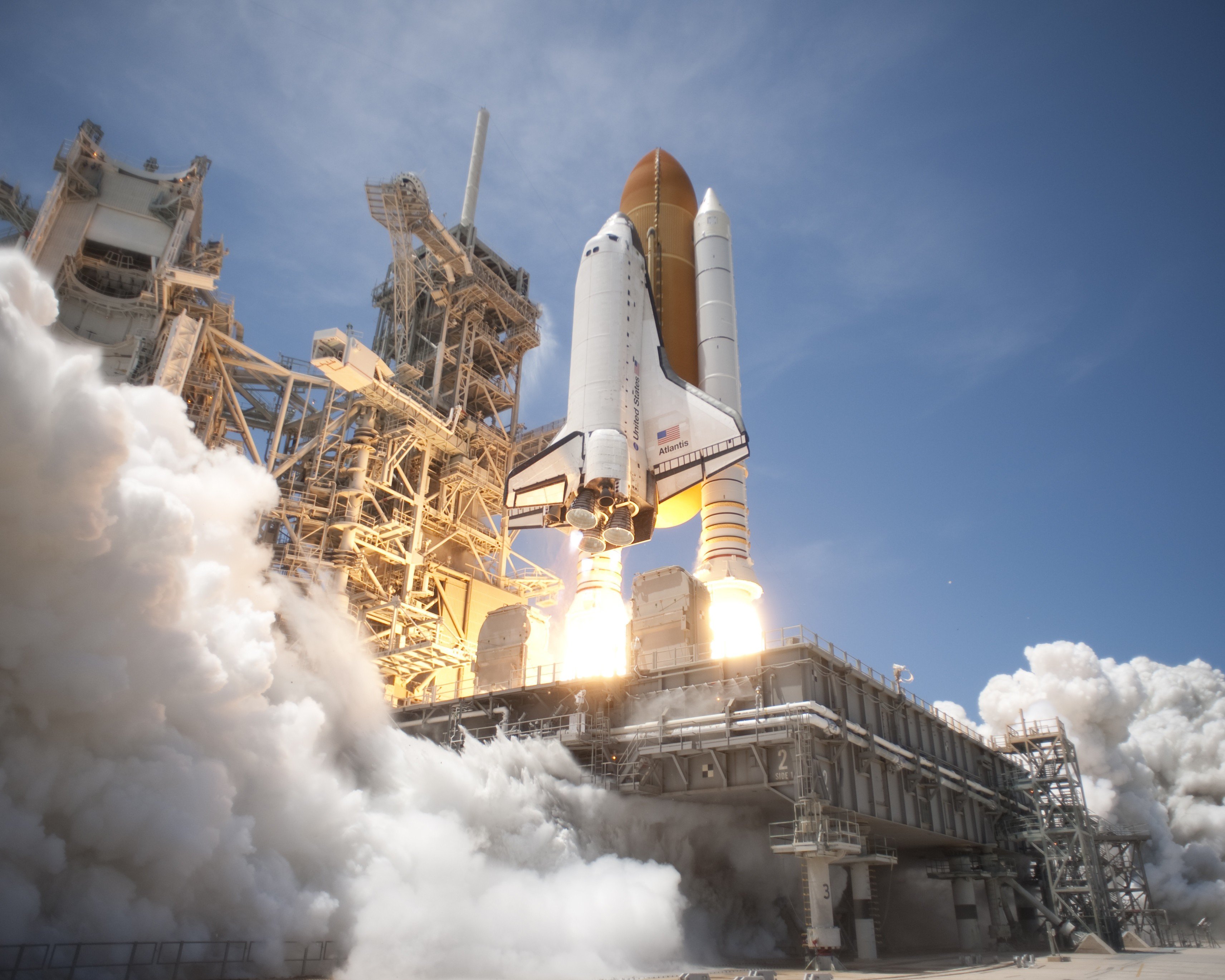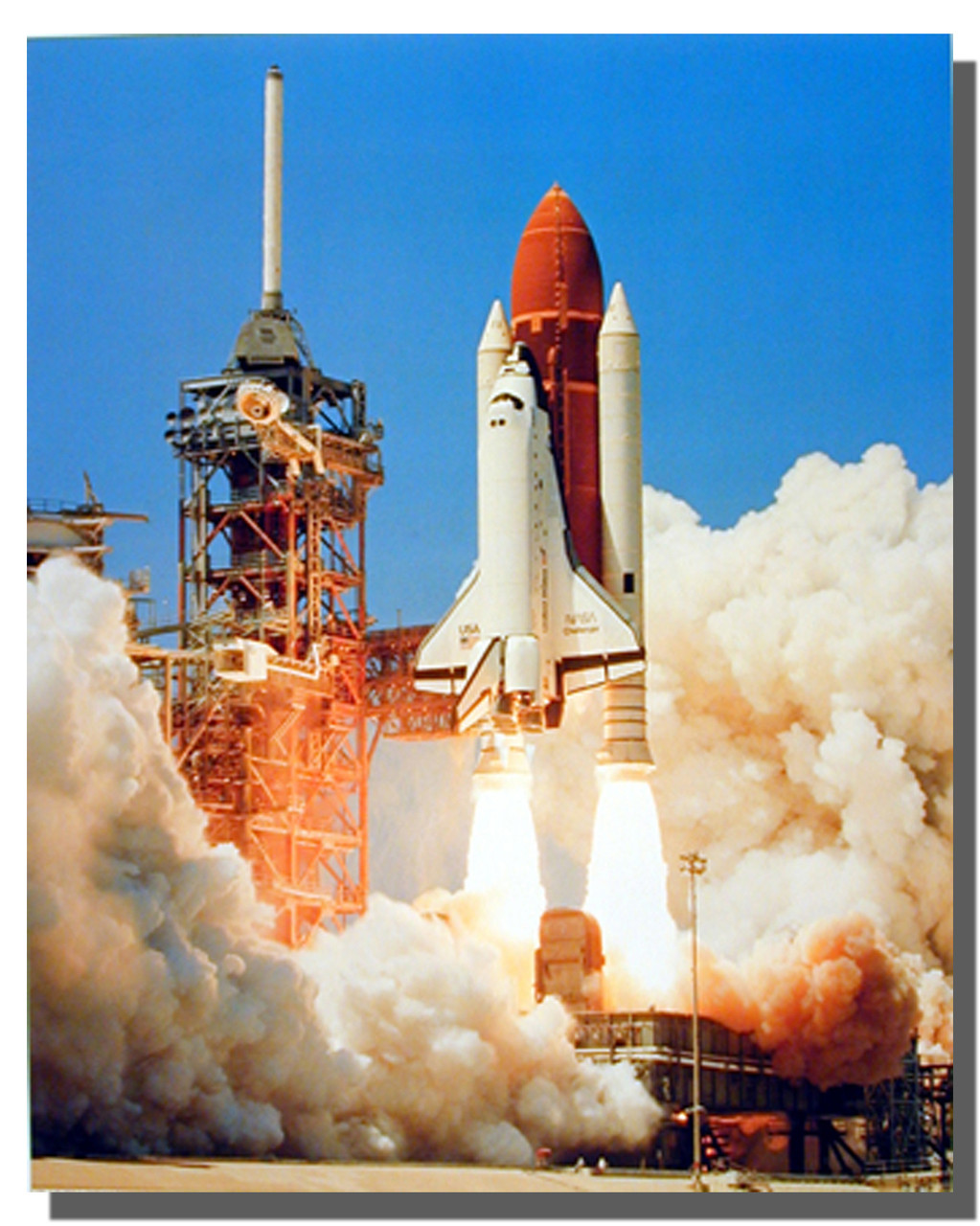

#NASA SPACE SHUTTLE PHOTO FULL#
US shuttle was doomed by the large external tank and the segmented SRBs reflecting weakness or general paralysis of US aerospace skills.Īfter the air terror campaign against helpless Yugoslavia and the ruthless air-sea Christmas Lewinsky bombing of Iraq, an emboldened US came up with a new military doctrine that called for full spectrum dominance on the battlefield.īut in 2022, events have shown US doesn’t need to worry too much about the battlefield. Unfortunately, buran only appeared on the scene when the USSR was being torn up by internal forces, despite being a better design and a true masterpiece of Soviet aerospace engineering. The collection of Endeavour photos can be viewed online at Microsoft Live Labs beginning Monday.The US shuttle led to the development of buran, the Soviet equivalent which incidentally boasted or sported a superior ceramic heat coating. Specifically, astronauts will be delivering a truss segment that links two different modules of the station.

Wednesday's Endeavour mission, officially called STS 118, will take seven astronauts, one of whom is a schoolteacher, to the International Space Station to continue repair work on the station, Kemp said. or capture extremely high-resolution megapixel images, and put them all together to create a massive 3-D multigigapixel arrangements." "You can use a cell-phone camera or a standard digital camera. "The barriers to entry are extremely small here," he said. Photosynth gives Web users the ability to create 3D images with even the lowest-resolution digital photos, said Adam Sheppard, group product manager for Microsoft Live Labs. Photosynth is managed by Microsoft Live Labs, a research division aimed at developing innovative Web-based technologies. Kemp said that NASA is contemplating the use of Photosynth to provide 3D images of other projects, including views of the International Space Station and the Hubble Space Telescope, or even to view landing sites on the Moon and the planet Mars. Also included in the Photosynth 3D montages of the project are shots of the Vehicle Assembly Building at the Kennedy Space Center. To take other photos, Microsoft and NASA flew a helicopter around the shuttle and snapped shots from different angles, Kemp said. Microsoft was able to photograph the shuttle while being wheeled onto the launch pad, called Launch Pad 39A, at dawn, as well as close-up views of NASA workers lifting the shuttle onto the rocket boosters it needs for launch. "You can see the shuttle in times when no one has access," he said.

The center collaborated with Microsoft's Live Labs team in Seattle and the NASA Kennedy Space Center in Cape Canaveral, Florida, on the project. In the past two weeks, the National Aeronautics and Space Administration gave Microsoft "unprecedented access" to Endeavour, letting photographers snap pictures of the craft in a way that has never been seen in public before, said Chris Kemp, director of strategic business development at NASA Ames Research Center in Palo Alto, California. Users then can fly through the scene and look at the images from different angles, or zoom in to specific parts of the 3D images. The technology takes standard two-dimensional digital images of similar things, examines their similarities and turns them into a new 3D environment. Microsoft acquired Photosynth when it purchased a Seattle-based startup called Seadragon in February 2006. Space Shuttle Endeavour Tuesday, Microsoft has teamed up with NASA to provide exclusive 3D views of the craft and a look at how the space agency prepares it for launch using Microsoft's Photosynth technology. — - To highlight the launch of the U.S.


 0 kommentar(er)
0 kommentar(er)
